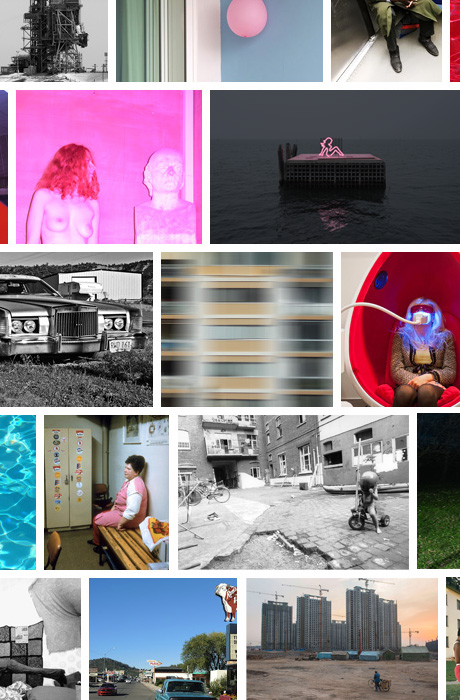contemporary photography
contemporary fine art photography
Contemporary Photography

What is Contemporary Photography?
Contemporary Photography is probably the most contemporary of all art forms. But what exactly is “contemporary photography”? And what is "fine art photography"?
Contemporary Photography
Sometimes there is a little confusion about the term, because there is no fixed period for contemporary photography. Some art historicians and other art experts define contemporary photography starting from the end of world war 2 (post war art) some from the 1970s. (Others claim even 1930s photographs as contemporary but this is not very common). Most players in the art market define contemporary photography as photographs from the 1970s onward.
Literally the expression "contemporary photography" means photography from the present time, or better from the same period of time we are having now. And literally "contemporary photography" means all kind of photography, but usually the term is used for fine art photography.
Originally photography was seen as a craft, not as an art. It had been a very long way for photography to be seen as an art.
In the U.S. F. Holland Day, Alfred Stieglitz and Edward Steichen were instrumental in making photography a fine art, and Stieglitz was especially notable in introducing it into museum collections.
In Europe as recently as 1960, photography was not really recognised as a Fine Art.
Until the late 1970s several genres predominated, such as; nudes, portraits and landscapes. Breakthrough 'star' artists in the 1970s and 80s, such as Sally Mann, Robert Mapplethorpe, Robert Farber, and Cindy Sherman, still relied heavily on such genres, although seeing them with fresh eyes. Others investigated a snapshot aesthetic approach. American organizations, such as the Aperture Foundation and the Museum of Modern Art, have done much to keep photography at the forefront of the fine arts. (wikipedia)
Fine Art Photography
Fine art photography is photography created in accordance with the vision of the artist as photographer. Fine art photography stands in contrast to representational photography, such as photojournalism, which provides a documentary visual account of specific subjects and events, literally representing objective reality rather than the subjective intent of the photographer; and commercial photography, the primary focus of which is to advertise products or services. (wikipedia)
Related (or synonymous) terms to "fine art photography" are "art photography", "artistic photography" or "photo art".
Although fine art photography may overlap with many other genres of photography, the overlaps with fashion photography and photojournalism merit special attention.
In 1996 it was stated that there had been a "recent blurring of lines between commercial illustrative photography and fine art photography," especially in the area of fashion. Evidence for the overlap of fine art photography and fashion photography includes lectures, exhibitions, trade fairs such as Art Basel Miami Beach and books.
Photojournalism and fine art photography overlapped beginning in the "late 1960s and 1970s, when... news photographers struck up liaisons with art photography and painting". In 1974 the International Center of Photography opened, with emphases on both "humanitarian photojournalism" and "art photography". By 1987, "pictures that were taken on assignments for magazines and newspapers now regularly reappear[ed] - in frames - on the walls of museums and galleries".
(Wikipedia)
There is now a thriving collectors' market for which the most sought-after art photographers will produce high quality archival prints in strictly limited editions.
In addition to the "digital movement" towards manipulation, filtering, and or resolution changes, some fine artists deliberately seek a "naturalistic," including "natural lighting" as a value in itself. Sometimes the art work as in the case of Gerhard Richter consists of a photographic image that has been subsequently painted over with oil paints and/or contains some political or historical significance beyond the image itself. The existence of "photographically-projected painting" now blurs the line between painting and photography which traditionally was absolute.
Different types and genres of photography
Although photography has changed with the development of technology its core genres remained basically the same. Common genres are: Conceptual photography, fine art nude, portrait photography, stillife photography, landscape photography, staged photography, street photography, experimental photography, editorial photography, fashion photography, architecture photography, documentary photography and wildlife photography. Besides there are some special genres like underwater photography, aerial photography, minimal photography, macro photography and more.
Other genres like scientific photography, wedding photography, industrial photography or sports photography are usually not seen as genres of fine art photography.
Of course different genres of photography can also overlap and mix up between them.
Learn more about different types and genres of photography here.